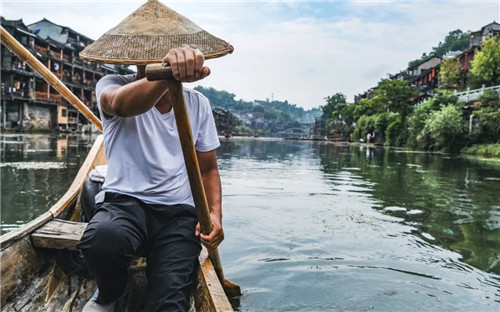The ancient water town that came but couldn't bear to leave

Arched stone Bridges spanning hundreds of years, lively canal streets full of life, simple and elegant riverside houses... In the south of the Yangtze River, which is called "Jiangnan", the criss-crossing river network has become the life network of the residents of the town. Here, the river not only contributes the sound of the babbling water and irrigates the flowers and plants on the terrace, but also bears the heavy trust of life.
Although many of the water towns share similar architectural features, each town is shaped by its own flow along the local river, so while you may have already visited many traditional water towns, you will always find many new and fascinating experiences in each new place.


Most of the water towns in the East China Plain are distributed in the Yangtze River Delta region, covering the west of Shanghai, southern Jiangsu and northern Zhejiang. Here, you have a dazzling array of choices, but you may as well start below!
Zhujiajiao

With its 36 ancient Bridges, grand old houses and beautiful greenery, Zhujiajiao looks a little out of place compared to the soaring skyscrapers of central Shanghai.

But there is no doubt that the number of tourists who choose to travel to Zhujiajiao on weekends or holidays is no less than the number of tourists on Nanjing East Road.


Dating back more than 1,700 years, today Zhujiajiao is a charming mix of alleys, Bridges and water village architecture from the Ming and Qing dynasties - all crammed into a small area that will take you three hours to explore from start to finish.
Tongli

There is no doubt that Tongli is one of the water towns you should not miss. The suburb of Tongli is surrounded by five lakes, in this sense, it appears more "watery" than other water towns. The 15 canals are so tightly woven into a network that they even divide the town into seven islands, meaning that most of the homes here are close to the canals. After the Song, Yuan, Ming and Qing dynasties, 40 Bridges connected the islands, and almost every corner has a beautiful canal scenery.

Like most water towns, it dates back more than 1,000 years to the Song Dynasty, but its proximity to Suzhou has always made it prosperous. Today, it is connected to the Suzhou subway, which means that it may be flooded with tourists on weekends, but that doesn't stop you from stepping into its back alleys and experiencing its true beauty.
Wuzhen

Wuzhen is at the center of a triangular ring of Shanghai, Suzhou and Hangzhou, through which the Grand Canal runs. Although some of the buildings in the town have been rebuilt or have undergone extensive restoration, half of the buildings are still ancient buildings, and you can feel the charm of its 1,300 years of history.


Wuzhen is divided into four sections by water -- east, south, west and north. The north and east are the most visited areas, while the west is less bustling and has many boutique hotels built in old buildings.
Zhouzhuang

With a history of 900 years, Zhouzhuang, like nearby Tongli, is one of the most famous water towns in Jiangsu, and you can even find Zhouzhuang in the works of the famous painter Chen Yifei (1946-2005).

Despite its crowds, it still exudes a retro feel and old-world beauty, with many well-preserved residences and 14 stone Bridges spanning from the Yuan Dynasty to the Qing Dynasty. If you choose to start your adventure in Zhouzhuang early in the morning, you are likely to meet many artists and photographers who will be inspired by Zhouzhuang in the morning.


In addition, there are plenty of boutique hotel options in Zhouzhuang, but whether you choose to stay overnight or not, be sure to try the local braised pig's feet: Wansan trotters.
Nanxun

Compared with other water towns, Nanxun may not be as famous, but this also means that compared with nearby Wuzhen, there are fewer tourists here, so it will obviously make people feel a different kind of peace. The old town of Nanxun is still a lively living area, and you may even see old people washing clothes on the river, while locals drink tea or play cards behind them.

During the Ming and Qing dynasties, Nanxun flourished as a major silk producer and, like Wuzhen, an important trading post along the Grand Canal, where many silk merchants built grand mansions and where Chinese architecture with a touch of European elements was popular among the elite.
Xitang County

Only about an hour's drive from Shanghai and Suzhou, the ancient Xitang was built during the Warring States Period (476-221 BC). Unlike other water towns, Xitang has a unique rain gallery that allows residents and visitors to enjoy a stroll in the wind and rain.

These wooden and stone rain galleries are 1.3 kilometers long, and movie fans may realize that they were the location of the final chase scene in the 2006 movie Mission: Impossible III.


Previous Article:Shan Dao (Xijiao Branch)
Next Article:Luxury weekend Shanghai Hongqiao
